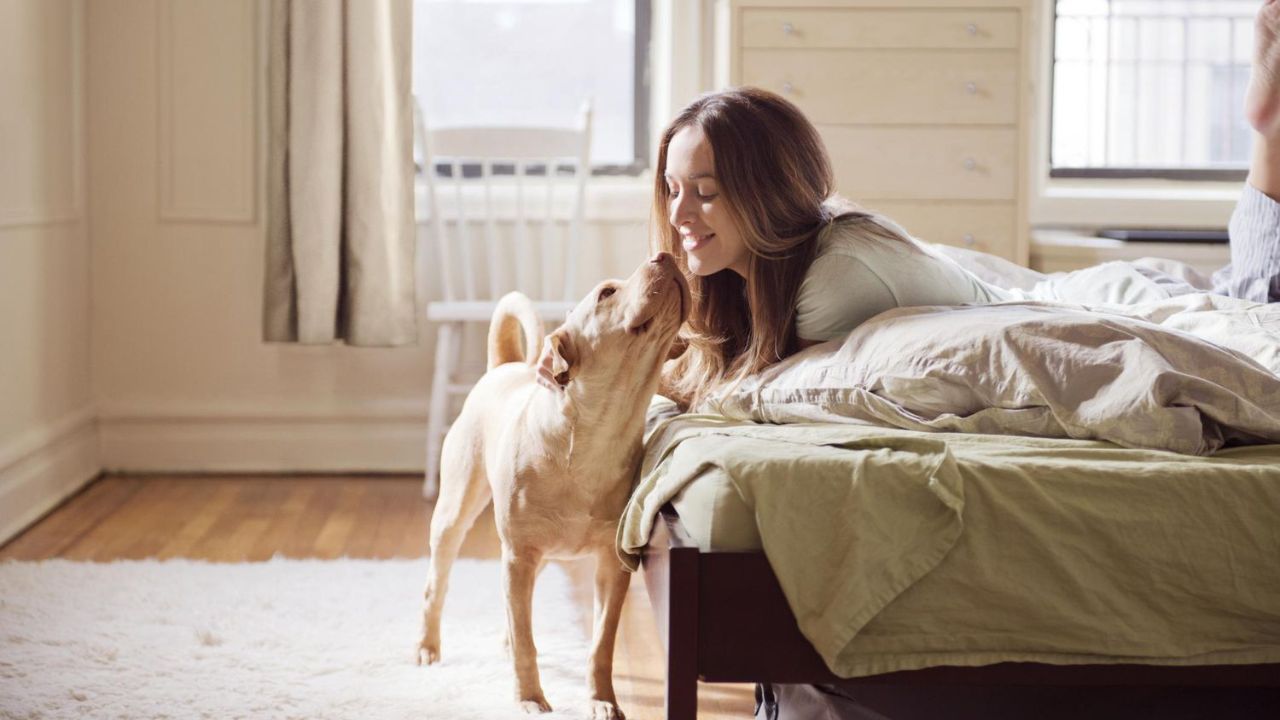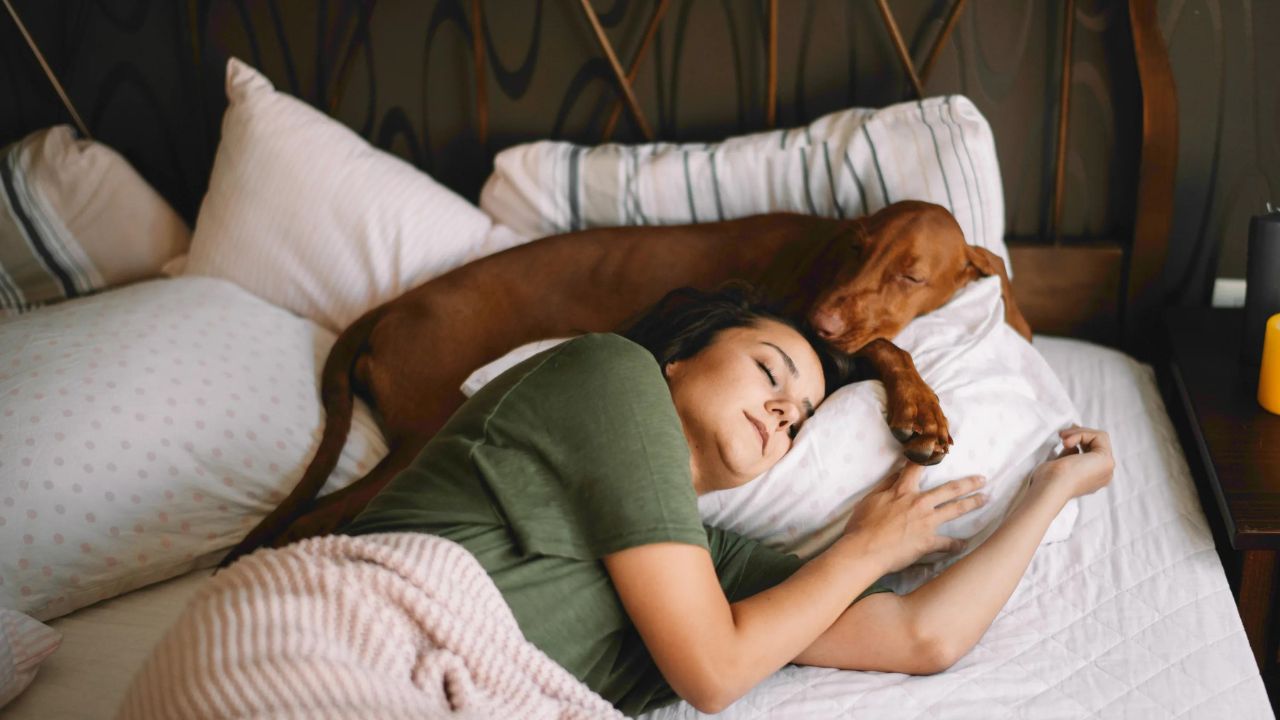Deciding when a puppy can sleep with you involves understanding age milestones, health considerations, and training techniques. Balancing the desire for companionship with the puppy’s well-being is key. This summary highlights the importance of informed decision-making for a positive co-sleeping experience between owners and their furry companions.
Puppy Sleep Patterns
Puppy sleep patterns are essential for every dog owner. Puppies, much like human infants, undergo distinct sleep phases crucial for their growth and development. Typically, a puppy’s sleep pattern involves alternating between short naps and longer, deeper sleep cycles.
This is especially true during the early stages of a puppy’s life, where they require significant rest for physical and mental development. As puppies age, their sleep patterns gradually align with more adult-like rhythms. Observing and accommodating these patterns is vital for fostering a healthy and happy puppy.
Owners should create a conducive sleep environment, considering factors like comfort, warmth, and a sense of security. By recognizing and adapting to their sleep needs, owners can contribute to a well-rested and content puppy, strengthening the bond between human and canine companions.
Bonding Through Sleep
Bonding through sleep is a profound aspect of the human-canine relationship, transcending mere companionship. Allowing your puppy to share your sleeping space fosters a deep connection, creating emotional bonds that go beyond the waking hours. Dogs, being social animals, thrive on proximity and intimacy during rest.
This shared experience not only strengthens the bond but also contributes to a sense of security and trust between you and your furry friend. Observing the peaceful moments of slumber, intertwined with the warmth and comfort of shared sleep, creates lasting memories and solidifies the unique connection between pet and owner.
Embracing this aspect of companionship adds a layer of joy and fulfillment to the human-canine bond, making the relationship richer and more meaningful. In essence, bonding through sleep is a beautiful journey that enhances the overall well-being of both you and your beloved furry companion.
Health Considerations
Health considerations play a pivotal role in our overall well-being, demanding attention and conscious choices. When it comes to personal health, factors like nutrition, exercise, and mental wellness take precedence. A balanced diet, regular physical activity, and mindfulness contribute to a robust foundation.
Additionally, preventive measures such as vaccinations and health screenings aid in the early detection of potential issues. Mental health, often overlooked, is gaining recognition for its profound impact. Adequate sleep, stress management, and seeking professional support when needed are integral components.
Recognizing the interconnectedness of physical and mental health fosters a holistic approach. In the broader context, societal health considerations encompass environmental sustainability and equitable access to healthcare. Prioritizing health considerations on individual and societal levels is an investment in a vibrant and resilient future.
Training Your Puppy to Sleep with You
Training your puppy to sleep with you is a rewarding process that strengthens the bond between you and your furry friend. Begin by establishing a consistent routine, encouraging positive associations with bedtime. Use rewards and praise to reinforce good behavior, gradually introducing your puppy to the sleeping area.
Patience is crucial; address any challenges calmly, ensuring a positive and stress-free experience for your puppy. Incorporate comfort items, like a favorite blanket or toy, to create a cozy sleeping environment. Consistency is key in reinforcing boundaries and teaching your puppy when it’s time to settle down.
By employing positive reinforcement and creating a comfortable space, you not only facilitate a peaceful night’s sleep but also nurture a sense of security and companionship that will last a lifetime.
Setting Boundaries: Establishing clear boundaries is essential for a harmonious sleep arrangement. Knowing when to allow your puppy into bed and when to encourage independent sleeping helps create a balanced and enjoyable experience for both you and your pet.
When is it Safe: Determining when it’s safe for your puppy to sleep with you involves understanding age milestones and ensuring the safety of both the puppy and the owner. Gradual introduction to co-sleeping can contribute to a smooth transition.
Your Puppy’s Cues: Paying attention to your puppy’s behavior and preferences is key to a successful co-sleeping arrangement. Recognizing cues that indicate your puppy is ready to sleep with you ensures a positive experience for both parties.
Creating a Sleep Routine
Creating a sleep routine for your puppy is a pivotal aspect of their overall well-being. Dogs, much like humans, thrive on consistency, and establishing a structured sleep schedule contributes to their physical and mental health. Start by designating a specific bedtime, ensuring it aligns with your puppy’s natural sleep patterns.
Introduce calming rituals before bedtime, such as a short walk or gentle playtime, to signal the approach to sleep. Providing a comfortable and quiet sleeping space enhances the effectiveness of the routine. Remember, patience is key during the initial stages of establishing a sleep routine, as puppies may need time to adjust.
Over time, a consistent sleep routine not only fosters a sense of security for your furry friend but also promotes a harmonious living environment for both you and your beloved pet.
Benefits of Co-Sleeping: The benefits of allowing your puppy to sleep with you extend beyond emotional bonding. Physically and psychologically, co-sleeping can contribute to a happier and healthier relationship between you and your furry companion.
Common Concerns Addressed
Addressing common concerns is crucial in any decision-making process, and it’s no different when it comes to various aspects of life, including pet care. When considering topics like pet ownership, training, or health, individuals often encounter common concerns.
These concerns may range from allergies and hygiene issues to potential disruptions in daily routines. In this context, addressing common concerns becomes a guiding principle. By dispelling myths, providing accurate information, and offering practical solutions, individuals can make informed decisions that enhance the well-being of both themselves and their pets.
In the realm of responsible pet ownership, acknowledging and addressing common concerns contribute to creating a harmonious and fulfilling relationship between pet owners and their furry companions.
Creating a Safe Sleeping Environment

Creating a safe sleeping environment for your puppy is a crucial aspect of responsible pet ownership. Ensuring a secure space not only promotes your furry friend’s well-being but also contributes to a peaceful coexistence. Start by eliminating potential hazards in your bedroom, such as small objects or electrical cords.
Puppy-proofing the sleeping area involves providing a comfortable bed with appropriate bedding and toys. Consider using a crate for added security, offering a den-like space for your puppy to feel safe. Temperature control is essential, ensuring the room is neither too hot nor too cold.
Regular cleaning and maintaining a hygienic environment contribute to your puppy’s health. By taking these measures, you create a nurturing and safe space where your puppy can enjoy restful sleep, fostering a positive and harmonious relationship between you and your furry companion.
Alternatives to Co-Sleeping: While co-sleeping is a popular choice, exploring alternative sleeping arrangements is essential. Finding the right fit for your puppy and your lifestyle ensures a comfortable and mutually beneficial sleep setup.
Personal Experiences: Real-life anecdotes from puppy owners who allow their furry friends to sleep with them provide valuable insights. These stories highlight the positive impact on the human-canine relationship and showcase the joy that co-sleeping can bring.
Conclusion
When a puppy can sleep with you, it involves careful consideration of various factors. Whether you choose to share your bed or explore alternative arrangements, prioritizing your puppy’s well-being and fostering a strong bond will undoubtedly lead to a fulfilling companionship. Get ready for heartwarming nights with your furry friend! If you’re considering co-sleeping, follow our guide for a cozy and delightful bedtime routine. After all, there’s nothing better than sharing sweet dreams with your adorable puppy.
FAQ
Will My Puppy Ever Let Me Sleep In?
While you may eventually want to let your dog sleep in bed with you or your kids, they should start out sleeping in a crate. You can always let them sleep in a crate later once they’re fully potty-trained, sleeping soundly, and happily acclimated to their crate.
Do Puppies Like to Sleep With Humans?
The bond you and your pup share is more than emotional—it’s physiological. “Besides safety, affection and trust, dogs like to sleep alongside their human companions because physical closeness to their owners releases the hormones oxytocin and dopamine, which make animals feel good,” Dr. Hess says
Should I Ignore My Puppy Crying at Night?
No, ignorieren Sie Ihr Hund, der nachts weint. Es könnte das Problem verschlimmern, wie bereits erwähnt. Ihr Hund wird nicht lernen, wie man self-soothe; it’ll just teach them that you aren’t coming to help or comfort them, even if they need it. It can cause anxiety and damage your bond.
How Often do Puppies Poop?
It is not uncommon for a puppy to defecate 5-6 times per day. Some will be eliminated even more frequently. The good news is that the pace of pooping will slow down as the dog matures. Although a 2-week-old puppy may defecate at every feeding, by 12 weeks, they may be down to only 4 times per day.
How Do You Toilet Train a Dog?
Choose an outside bathroom spot, and always take your puppy (on a leash) to that spot. While your puppy is calming down, use a specific word or phrase that you can use before they go to remind them what to do. Only take them for a longer walk or playtime after they have been eliminated.

